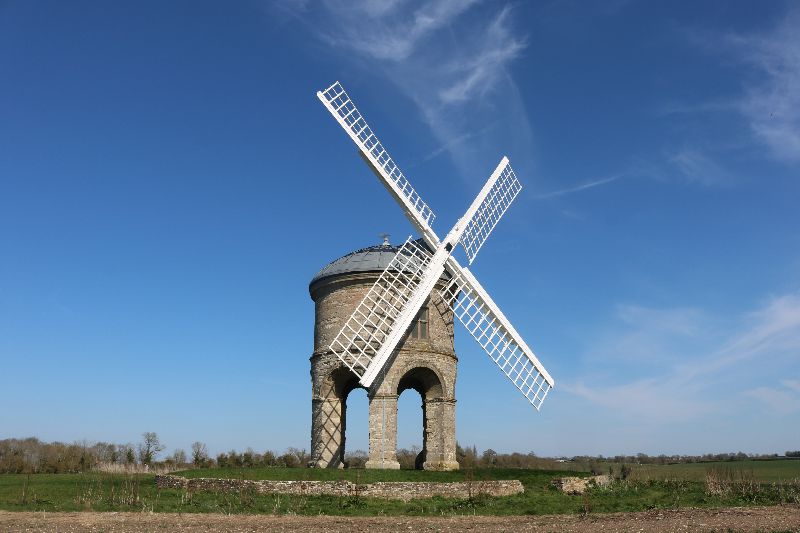Chesterton Windmill
Chesterton Windmill is one of Warwickshire’s most famous landmarks. It has stood on a hilltop overlooking the village of Chesterton for nearly 350 years. It was built around 1632 – 1633, probably by Sir Edward Peyton, who was Lord of the Chesterton Manor House. At this time John Stone, a pupil of Inigo Jones, was in Chesterton designing the new Manor House and he probably helped with designing the windmill as well.
The estate accounts at the Warwickshire County Record Office show that that the structure has always been a windmill, making it the earliest tower mill in England to retain any of its working parts.
The windmill was restored between 1965 and 1974 by Warwickshire County Council who are now the guardians of the Windmill. Four new sails were installed in April 2025.

Opening times
The windmill is open to the public during Heritage Open Weekends. Find out more about opening dates and times.
Free entry
General admission to the Windmill on Heritage Open Weekends is free.
Parking
There is on road parking nearby. During Heritage Open Weekends a parking area may be provided with a small charge.
Facilities and access
The Windmill is located on top of a hill just off the Fosse Way. Please note that there is no level access up to the windmill. To view the internal workings of the Windmill visitors must ascend a number of steep stone steps.
No public toilets are available at the site.




